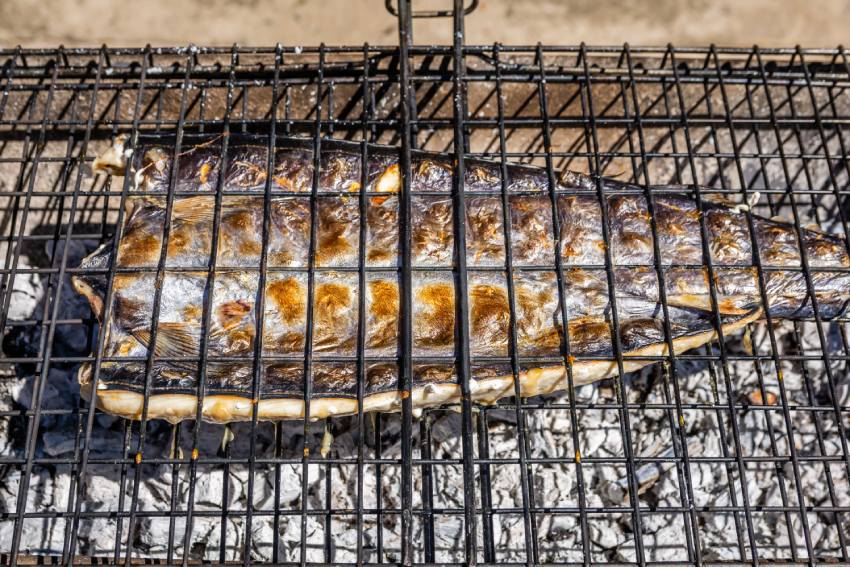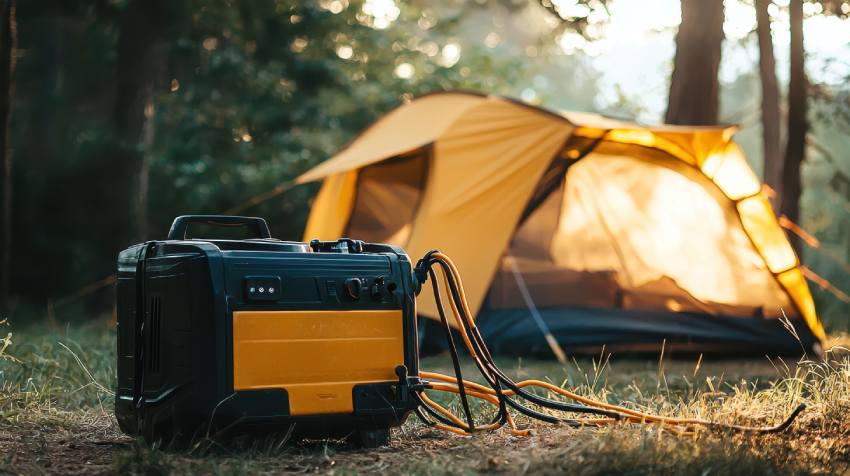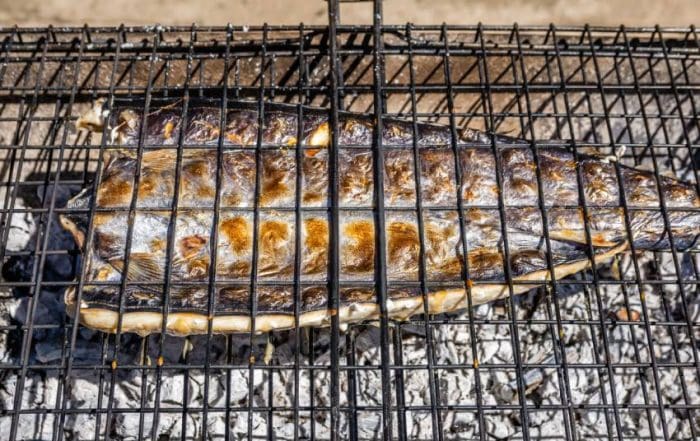How to Braai Snoek the Traditional South African Way
Learning how to braai snoek properly is like joining a secret society where everyone claims to know the “authentic” method, but half of them are making it up as they go along. Here’s the uncomfortable truth about snoek: most people have ruined it so spectacularly that they’ve convinced themselves they don’t like it. The fish has been unfairly maligned by decades of poor handling, questionable cooking techniques, and social snobbery that positioned it as “poor people’s food” despite being delicious when prepared properly. Whether you’re planning to braai at our caravan park facilities or trying to impress guests at your chalet, understanding snoek’s quirks will save you from joining the ranks of people who’ve turned perfectly good fish into something resembling cardboard.
South African History of Snoek
Snoek’s reputation in South Africa is a masterclass in how social attitudes can destroy a perfectly good ingredient. Originally caught by Khoikhoi fishermen who knew what they were doing, snoek became a reliable protein source long before European settlers arrived with their ideas about “proper” fish.
The fish’s downfall started during apartheid, when marketing campaigns and social attitudes positioned snoek as inferior food for inferior people. Never mind that it’s nutritionally excellent and tastes great when handled properly—social engineering convinced middle-class South Africans that eating snoek was somehow beneath them.
Commercial fishing operations made things worse by prioritising quantity over quality. Fish that should have been consumed fresh were transported without proper refrigeration, arriving at inland markets in questionable condition. People experienced badly handled snoek and assumed the fish itself was the problem, not the supply chain.
The irony is delicious: while South Africans were rejecting snoek as “cheap fish,” other countries were paying premium prices for the same species under different names. Marketing matters more than most people want to admit, and snoek got terrible marketing for decades.
Modern sustainable fishing and improved cold chain management have restored snoek’s reputation among people who actually know how to cook. Quality snoek, properly handled from boat to braai, offers delicate, sweet flesh that rivals any expensive fish when treated with respect instead of prejudice.
Snoek Dishes You Can Make
Traditional snoek preparation focuses on not screwing up the fish’s natural flavour, which is harder than it sounds, given how many ways people have found to ruin it. Whole snoek, butterflied and grilled over moderate coals, remains the gold standard because it’s simple enough that you can’t overthink it into disaster.
Snoek pâté transforms leftover cooked fish into something that sounds fancy enough to serve to people who think they’re too good for snoek. Flake the cooked fish, mix with cream cheese, lemon juice, capers, and fresh herbs, then watch as the same people who turn their noses up at “cheap fish” ask for the recipe.
Smoked snoek requires patience and proper temperature control, two things that don’t always coexist around a braai. Cold smoking over indigenous wood creates complex flavours, but hot smoking works faster if you can resist the urge to crank up the heat and rush the process.
Snoek curry, popular in Cape Malay cuisine, combines the fish with aromatic spices that complement rather than mask its flavour. The trick is adding the fish late in the cooking process so it doesn’t fall apart or turn into mush—something that happens depressingly often when people treat snoek like it’s indestructible.
Pickled snoek preserves the fish in a vinegar-based brine with onions and spices. It’s not traditionally a braai dish, but it makes an excellent accompaniment that proves snoek can be sophisticated when you stop treating it like second-class seafood.
Tips for Seasoning Snoek
Snoek’s delicate flavour responds poorly to the heavy-handed seasoning that works on stronger fish. The natural oils carry flavour effectively, meaning less is often more—a concept that seems to escape people who think more spice automatically equals better taste.
Salt timing affects texture more than most people realise. Salting too early draws out moisture, creating drier fish that defeats the purpose of proper preparation. Apply salt just before cooking, or use a light brine for 15-20 minutes if you want to get fancy about it.
Lemon juice serves multiple purposes beyond just adding citrus flavour. The acid helps firm the flesh, making it easier to handle during cooking while brightening the fish’s natural taste. Apply lemon juice after cooking rather than before to prevent the acid from “cooking” the fish prematurely—a mistake that creates mushy, unappetising results.
Traditional Cape Malay spices like coriander, fennel, and mild curry powder complement snoek without overwhelming it. Create a simple spice rub with these ingredients and a touch of brown sugar to encourage caramelisation, but resist the urge to turn your fish into a spice showcase.
Fresh herbs work infinitely better than dried alternatives for snoek preparation. Dill, parsley, and fennel fronds provide aromatic complexity that enhances rather than competes with the fish’s flavour. Add fresh herbs after cooking to preserve their bright taste and prevent them from burning into bitter disappointment.
What is The Right Way to Braai Snoek?
Proper snoek braai technique starts with fire management, not fish preparation—a concept that seems to escape people who think “hot fire equals good braai.” Medium-hot coals provide the ideal cooking environment: hot enough to create appealing grill marks without turning the outside into charcoal while the inside remains raw.
Butterflying technique determines success more than any other factor, yet most people approach it like they’re performing surgery instead of preparing dinner. Remove the backbone and ribs carefully, leaving the fish in one piece that opens like a book. Proper butterflying ensures even cooking and makes the fish easier to handle, but don’t stress about perfection—functional beats pretty every time.
Oil the braai grid, not the fish. Snoek’s natural oils provide sufficient fat for cooking, and additional oil often causes flare-ups that char the exterior while leaving the interior undercooked. A well-oiled grid prevents sticking without adding unnecessary complications to the process.
Cooking time varies with fish thickness and coal temperature, but most snoek requires 6-8 minutes per side. The flesh should flake easily when tested with a fork but still appear moist in the thickest parts. Overcooked snoek becomes dry and loses its delicate texture—the fate that’s befallen countless fish at the hands of impatient braai masters.
Resting the cooked fish for 2-3 minutes allows juices to redistribute throughout the flesh, resulting in more even moisture and flavour. Cover loosely with foil during resting to retain heat without continuing the cooking process, because nobody wants to serve fish that’s simultaneously overcooked and cold.
H2 – Book Your Stay and Rediscover What Good Snoek Tastes Like
Mastering traditional South African braai techniques connects you with culinary wisdom that predates the social nonsense that nearly ruined snoek’s reputation. Mbizi Game Lodge & Spa provides well-equipped braai facilities and the peaceful ambience of the Limpopo bushveld, creating the perfect environment to practice proper fish preparation without the pressure of impressing people who’ve probably never cooked snoek properly themselves. Learning how to braai snoek the traditional way isn’t just about cooking technique—it’s about reclaiming a piece of South African food culture that deserves better than the treatment it’s received. Contact us to book your stay and discover why proper preparation transforms supposedly “cheap fish” into something worth celebrating.














